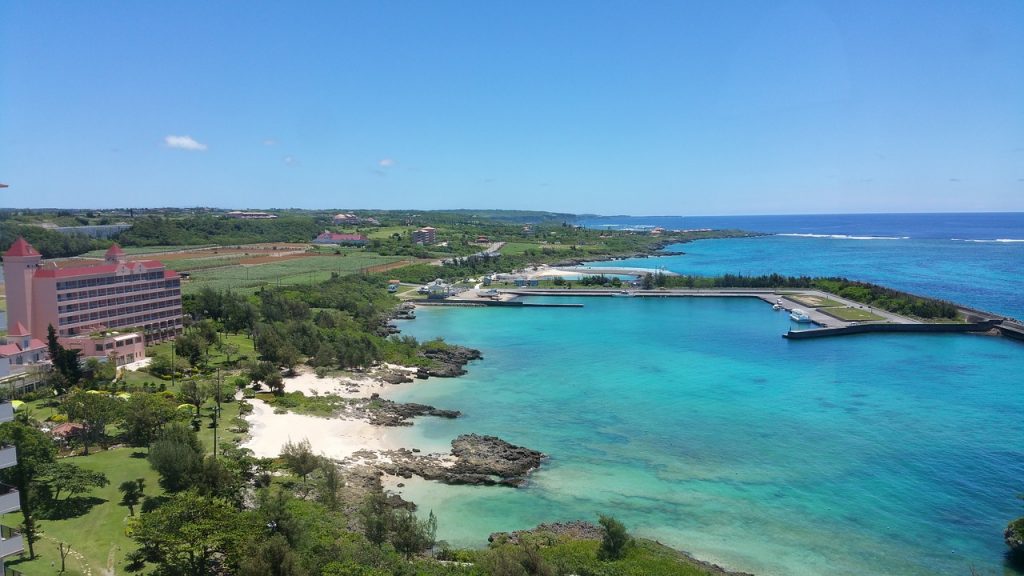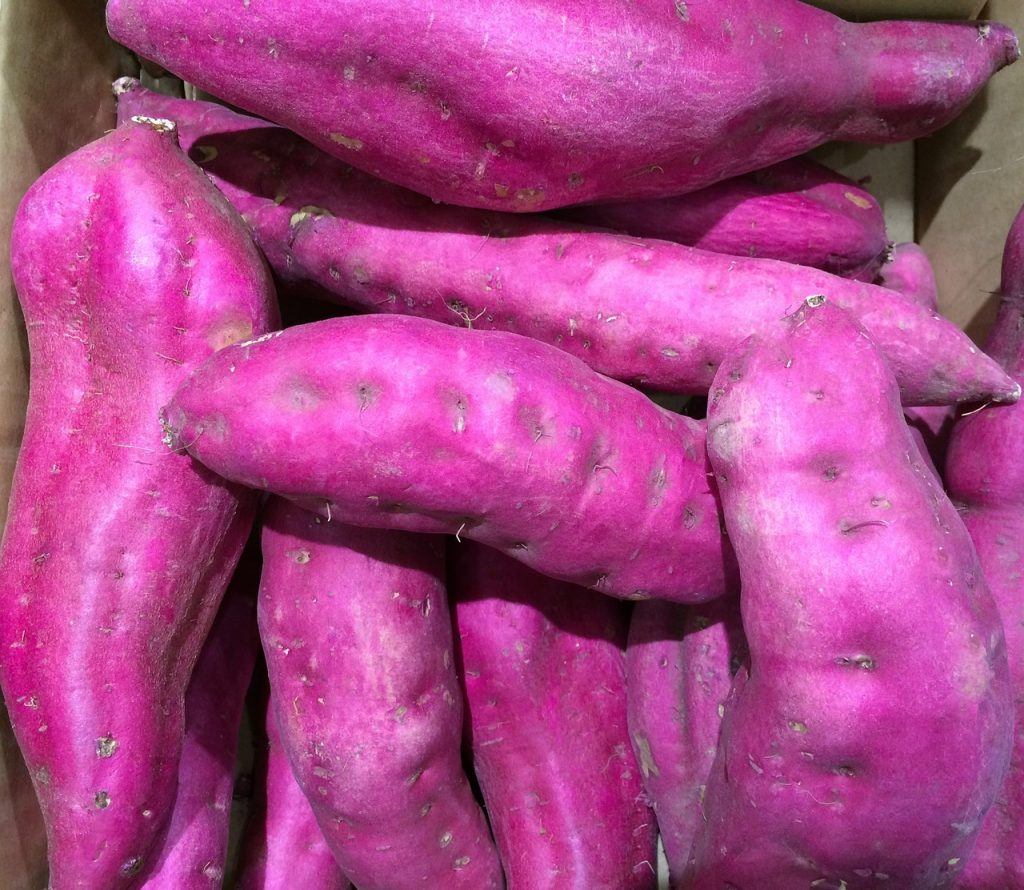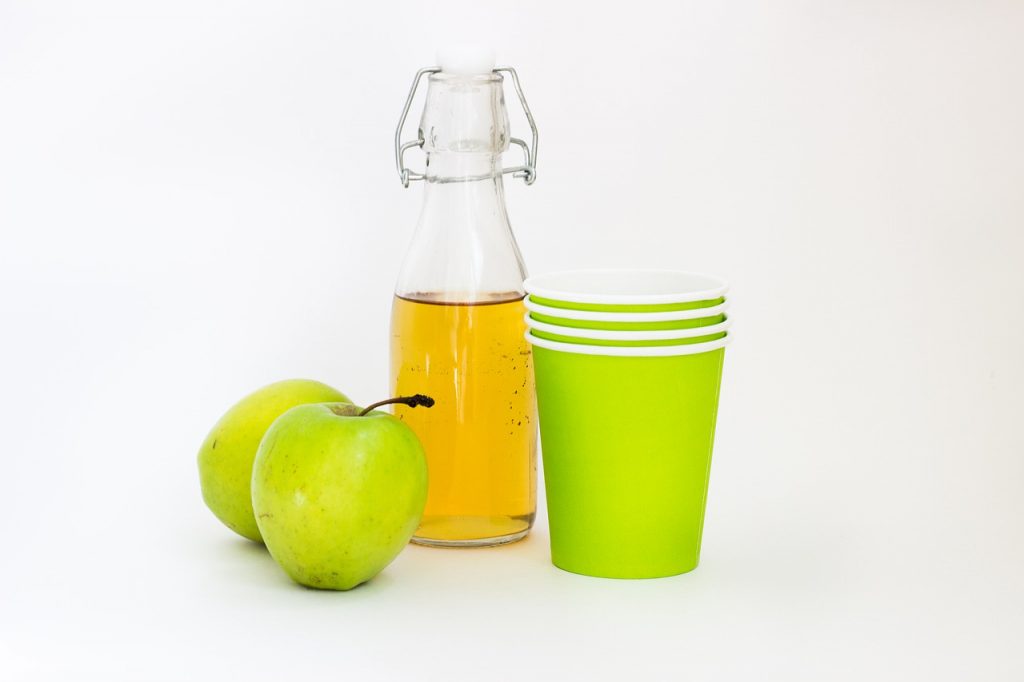[Article updated on 19/09/2023]
Okinawa is a Japanese prefecture with the highest rates of centenarians in the world. There are 400 to 500 centenarians per 100,000 inhabitants. But why do people in this region live so long? In the following lines, I tell you everything about the famous Okinawa diet or perpetual youth regime.
What is the origin of the Okinawa regime?
Explorer Dan Buettner was the first to mention that there are certain places in the world where the longevity rate was higher than the rest of the planet. He called them “blue zones.” One of the five regions he flagged is Okinawa, a Japanese island in the East China Sea east of Taiwan. Since then, a lot of research has been done among the population to find out what the secret is to living a long and healthy life. One of the factors that has been studied the most is their diet.

Japan is already a country of great longevity, but the Okinawa region has a higher percentage of centenarians who also enjoy very good health. Okinawans are thin, have unusual energy, appear younger and have lower rates of disease than the rest of the country.
In Okinawa, people seem much younger than they are. It is easy for them to reach 100 years old while being very healthy and active. They suffer less from cardiovascular disease and there is a lower rate of cancer. They don’t know what diabetes is.
So what was the diet of the Okinawans?
The Okinawans’ diet consisted, among other things, of vegetables, fish (3 times a week), seaweed, soy, rice, fruit, whole grains, squid and octopus. These Japanese ate a purple sweet potato rich in antioxidants and goya (bitter cucumbers). These are healthy foods that you cannot find easily in the market. But you can replace them with similar products from the Mediterranean diet.
Okinawans practice Hara Hachi Bu, a method of stopping eating before being completely full. They ate in small quantities, in a relaxed manner, without rushing. Okinawans chew their food well by constantly listening to their body and enjoying the moment. They didn’t eat dairy products. Okinawans did not eat red meat but white meat. They avoided processed foods and sugar.
But when the people of Okinawa Island westernized their diet, their life expectancy decreased. Traditional Okinawa food is therefore the one that really generates these benefits.
What is the Okinawa diet?
The Okinawa diet is characterized by being low in calories and fat. In its traditional form, it is a diet based on plant foods, soy as well as derivatives of this oily legume. Note that soy provides both protein, fiber and quality fats for the body. The daily consumption of meats and legumes was 90 grams per day while Okinawans consumed a large amount of vegetables, especially green and yellow.
In its healthiest form, the Okinawa diet is a diet free of ultra-processed foods and therefore low in sugars and saturated fats. It is rich in complex hydrates and highly concentrated in phytonutrients. These compounds have antioxidant and anti-inflammatory effects. The Okinawa regime is not intended to act as a powerful fat burner.
How to benefit from the benefits of the Okinawa diet?
If you want to enjoy the benefits of the Okinawa diet, you can approach it by putting the following tips into practice:
- Avoid eating processed and ultra-processed foods as much as possible. These dishes are not present in the traditional diet of the island of Okinawa, due to its geographical location.
- Reduce the consumption of animal foods. Meats, eggs and dairy products in general are almost not consumed in this Japanese diet.
- Eat mainly vegetables which provide most of the energy in this diet.
- Choose grains over legumes because grains like rice, wheat, and millet make up a large part of the traditional Okinawan Japanese diet.
- Include soy and its derivatives such as tofu, edamame or miso. They are largely a source of protein in the Okinawa diet.
- Limit legumes in general.
- Incorporate a minimum (less than a daily serving) of pork, fish and shellfish, as well as spices, herbs and preparations that contain them such as dashi broth.

What to eat on the Okinawa diet?
Okinawan culture views food as medicine and uses practices typical of traditional Chinese medicine. This includes aromatic herbs and spices with recognized health benefits.
The Okinawan lifestyle emphasizes daily physical activity and healthy diet-related practices like meditation. This diet aims to promote weight loss, even if you consume energy-rich foods.
Vegetables represent 60% of foods consumed (sweet potatoes, bamboo roots, seaweed, radishes, cabbage, carrots, pumpkins or green papayas). Cereals constitute 33% (millet, rice, wheat and noodles or different types of noodles). As for soy-derived products such as tofu, they constitute 5% of the foods consumed during the Okinawa diet. Meat, fish and shellfish represent 2% of consumption. Jasmine tea is widely consumed along with spices like turmeric.
What foods are prohibited in the Okinawa diet?
Due to the isolation of this island and its geography, a large amount of food was not easily accessible to the population. The traditional diet in Okinawa is quite restrictive compared to the modern Western diet. Therefore, if you want to follow this diet, you must restrict the consumption of the following foods:
- Beef, chicken or processed meats such as ham, bacon, salami, hot dogs, sausages or cold cuts.
- Animal products such as eggs and dairy products (milk, cheese, butter or yogurt).
- Processed products made with refined sugars, breakfast cereals, snacks and processed foods.
- Most legumes except soy, fruits, seeds or nuts.
- The Okinawa diet restricts several food groups such as meat, dairy, nuts or seeds.
The advantages of the Okinawa diet
Given the Okinawan diet’s high nutritional concentration and low calorie intake, residents of this Japanese island had low rates of obesity, cardiovascular disease and even cancer.
Certain components, such as flavonoids and antioxidants, are able to reduce oxidative stress in the body. They can thus help prevent cellular degeneration and DNA damage, as indicated by a study published in the journal of the American College of Nutrition.
For all this, the Okinawa diet can not only reduce cardiovascular risk and the negative effect of old age. This diet leads to an improvement in the quality of life and also helps to extend life expectancy.
The lessers
The main problem with this diet is that it avoids some very healthy and necessary food groups. This makes it difficult to stick to the diet. For example, it contains very little fruit, nuts, seeds or dairy derivatives.
Another controversial aspect is the high amount of sodium this diet provides. It provides on average more than 3.2 grams per day. This can be counterproductive in people with high blood pressure. Let’s not forget that the maximum amount recommended by the World Health Organization is 1.5 grams for hypertensive patients and 2.3 grams for the rest of the population.
Effectiveness of the Okinawa diet
You can lose weight with this type of diet. This will be the case if you eliminate various very high calorie products like sweets and processed foods and if you adopt the hara hachi bu concept. But the Okinawa diet is not particularly designed for weight loss, unlike other diets. On the other hand, it is very useful in combating certain digestive disorders.
Duration
The Okinawa diet aims to improve your eating habits. Unlike very restrictive diets, it is not done over a specific period. But you adopt it for life after trying it.

Special menus and recipes for the Okinawa diet
| Typical Day | Breakfast | To taste | Lunch | To taste | Dinner |
| Monday | 2 slices of flax or sunflower seed bread, 1 soy yogurt, 1 pear, a cup of green tea | apple, carrot and ginger juice | 50 g of wholemeal rice garnished with zucchini, salad mixed with tomatoes and cucumbers, 1 slice of wholemeal bread, green tea | soy yogurt | vegetable soup, omelette with 2 eggs, 1 slice of wholemeal bread, green tea |
| Tuesday | cereals or muesli (oats, rice or quinoa) and 3 nuts, soy milk (or rice), an apple, green tea | yogurt with a teaspoon of honey | carrot, radish and cucumber salad with sesame and soy sauce; steamed salmon and 30 g brown rice; 1 orange; green tea | fruit salad with lemon juice | 1 steamed potato, 1 slice of roast pork and lentils, green tea |
| Wednesday | 2 rice cakes, soy yogurt, green tea | apple, carrot and ginger root juice | vegetables of your choice (broccoli, green beans, peas, carrots, red peppers) and steamed salmon fillet, 1 slice of wholemeal bread, green tea | soy yogurt | mixed vegetable soup, pan-fried peppers and brown rice, 1 slice of wholemeal bread, a quarter of fresh pineapple, green tea |
| THURSDAY | fruit smoothie, 2 puffed rice cakes, green tea | yogurt with a teaspoon of honey | mixed salad (with brown rice, tomatoes, cucumbers), a slice of wholemeal bread, curried cod, green tea | fruit salad with lemon juice | legume soup, a slice of grilled chicken breast, mixed salad, a slice of whole wheat bread, green tea |
| Friday | cereals or muesli (oats, quinoa or buckwheat) and 3 nuts, vegetable milk or soy milk, 1 apple, green tea | apple, carrot and ginger root juice | Mixed salad (with rice, grated carrots, cucumber, green salad, radish), 1 slice of wholemeal bread, green tea | soy yogurt | pan-fried sesame tofu, steamed cod, 1 slice of wholemeal bread, green tea |
| SATURDAY | cereals or muesli (oats, quinoa or buckwheat) and 3 nuts, vegetable milk or soy milk, 1 apple, green tea | yogurt with a teaspoon of honey | brown rice and grated carrot salad, curried cod, 1 slice of wholemeal bread, green tea. | fruit salad with lemon juice | potato and quinoa omelette, a slice of wholemeal bread, a quarter of pineapple, green tea |
| Sunday | 2 slices of flax or sunflower seed bread, 1 soy yogurt, half a grapefruit | apple, carrot and ginger juice | baked sea bass with fennel seeds, brown rice, green tea | soy yogurt | tomato and celery salad, rice pilaf, a slice of wholemeal bread, soy yogurt, green tea |
Opinions of health professionals on the Okinawa diet
This type of diet can be difficult to follow if you don’t live in Okinawa and don’t have easy access to special foods from the region. That said, you can learn a lot from some of the principles of diet from the people of Okinawa Island. Placing more emphasis on whole foods, plant-based produce and dishes can have many health benefits. Limiting refined processed foods and highly sugary products as well as eating in moderation are all important strategies to incorporate into your lifestyle. Dr Jean-Michel Cohen says this: “if you want to live more than 100 years, then choose an Okinawa-style diet (if you are Japanese) otherwise adopt the Mediterranean diet. For my part, it’s Mediterranean.”
User reviews
Oka, a young follower, says she tried the Okinawa diet and became a fan. Roxane, another fan, finds the diet good overall because it is varied and balanced. For Jphil, the Okinawa diet is more than a diet. It is a way of living. He also finds that the principles of the Okinawa diet resemble the recommendations of the National Nutrition and Health Plan. He says this in particular regarding the 5 fruits and vegetables to consume per day.
